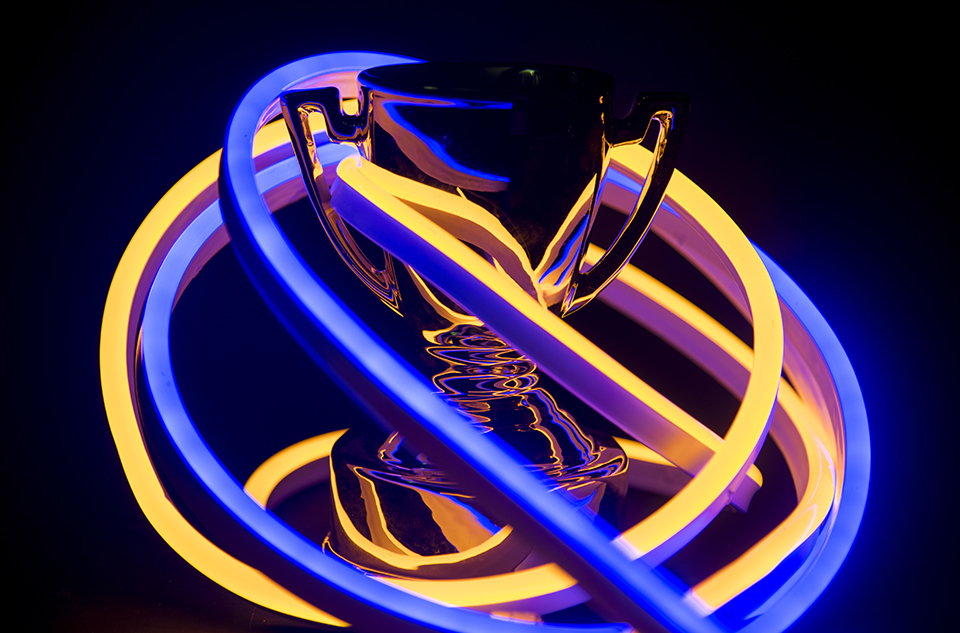Time:2025-05-27
In the realm of contemporary lighting, LED RGB Neon Flex has emerged as a transformative technology, bridging the gap between functional illumination and artistic expression. Renowned for its adaptability, energy efficiency, and vibrant color capabilities, this lighting solution is revolutionizing industries ranging from architectural design to retail spaces, offering designers and engineers unparalleled creative freedom.
The Technology Behind LED RGB Neon Flex
At its core, LED RGB Neon Flex combines advanced LED technology with flexible silicone or PVC tubing, creating a durable and versatile lighting system. Key innovations include:
Full-Color Spectrum Control: RGB (Red, Green, Blue) LEDs enable the creation of millions of colors through precise color blending, allowing for seamless transitions and static hues.
Intelligent Control Systems: Integration with DMX controllers, mobile apps, and smart home ecosystems (e.g., Alexa, Google Home) enables real-time adjustments to brightness, color, and dynamic effects.
Weather-Resistant Design: High-grade materials protect against moisture, UV exposure, and temperature fluctuations, making it suitable for both indoor and outdoor installations.
Modular Flexibility: Cuttable and bendable segments allow customization to fit curved surfaces, intricate patterns, and large-scale installations without compromising light uniformity.
Diverse Applications Across Industries
Architectural Accentuation
LED RGB Neon Flex is widely used to outline buildings, bridges, and landscapes, transforming static structures into dynamic visual landmarks. Its ability to adapt to curves and corners makes it ideal for highlighting unique architectural features or creating futuristic urban aesthetics.
Retail and Commercial Spaces
Retailers leverage customizable lighting to enhance brand identity and customer experiences. For example, color-changing neon flex can guide shoppers through stores, highlight product displays, or create seasonal themes that align with marketing campaigns.
Residential and Hospitality Design
Homeowners and interior designers use RGB neon flex to craft ambient lighting for living rooms, kitchens, and outdoor patios. In hotels and restaurants, dynamic lighting schemes set moods—calming tones for lounges or vibrant hues for entertainment areas—enhancing guest engagement.
Event and Entertainment Production
From concert stages to wedding venues, LED neon flex adds a layer of sophistication with programmable effects. Synchronized color transitions, pulsating rhythms, and interactive installations create immersive environments that elevate live experiences.
Public Art and Installations
Artists and urban planners employ neon flex in interactive public art, such as light sculptures or pathways that respond to movement. These installations foster community engagement while showcasing the fusion of technology and creativity.

Advantages Over Traditional Neon and Lighting Systems
Energy Efficiency: LED technology consumes significantly less power than conventional neon or incandescent lighting, reducing operational costs and environmental impact.
Durability: Unlike fragile glass neon, flexible silicone tubing resists breakage, ensuring longevity in high-traffic or outdoor environments.
Silent Operation: No humming or buzzing, making it ideal for noise-sensitive settings like theaters, offices, or residential areas.
Ease of Installation: Lightweight and bendable properties simplify mounting on complex surfaces, reducing labor and time compared to rigid alternatives.
Best Practices for Implementation
Collaborative Design Planning: Engage lighting specialists early to align neon flex layouts with structural and aesthetic goals.
Layered Lighting Strategies: Combine neon flex with spotlights, downlights, or linear LEDs to create depth and contrast.
Environmental Considerations: For outdoor projects, select UV-resistant variants and use waterproof connectors to ensure reliability in harsh climates.
Smart Integration: Utilize IoT-enabled controllers to automate lighting schedules, sync with music, or adjust based on ambient conditions.
Future Innovations and Trends
The evolution of LED RGB Neon Flex is being shaped by emerging technologies:
AI-Driven Personalization: Systems that learn user preferences to auto-generate lighting scenes for homes, stores, or events.
Sustainable Materials: Development of recyclable and biodegradable tubing to align with circular economy principles.
Augmented Reality (AR) Integration: AR apps that allow users to visualize neon flex installations in real time before purchase or installation.
Human-Centric Lighting: Adaptive systems that adjust color temperatures to support circadian rhythms, enhancing well-being in workplaces and homes.
Conclusion
LED RGB Neon Flex is more than a lighting solution—it is a catalyst for innovation across industries. Its ability to merge aesthetics, functionality, and sustainability positions it as a cornerstone of modern design. Whether enhancing architectural marvels, elevating retail experiences, or creating awe-inspiring art, this technology empowers professionals to push creative boundaries while meeting practical demands.
As advancements in smart controls and eco-friendly materials continue, LED RGB Neon Flex will remain at the forefront of lighting innovation, offering endless possibilities for those ready to illuminate the future.